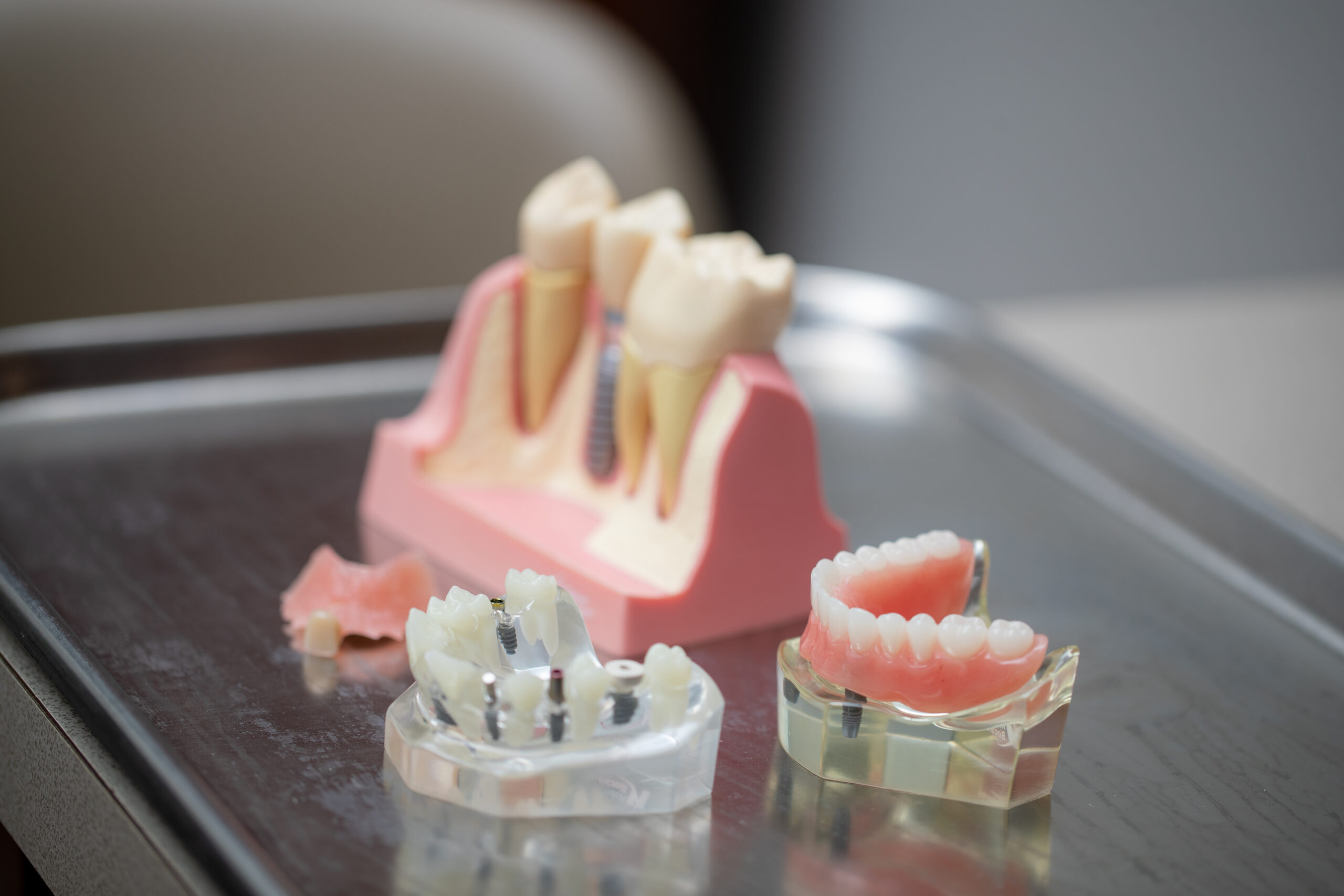Many of the patients that seek out an oral and maxillofacial surgeon are hoping for better function and aesthetics with beautiful dental implants. Implants are an amazing advancement in dental technology, but they need strong bone to anchor them. Your oral surgeon may recommend one of these pre-implant procedures to get your jaw ready to support your new smile.
Sinus Augmentation
Sinus augmentation, also called a sinus lift, is often necessary before receiving upper jaw implants. It’s performed if you’re naturally lacking bone thickness in that area or if you’ve been missing a molar, premolar or incisor for a while.
On either side of your nose are air-filled spaces called maxillary sinuses. By “lifting” the floor of these sinuses, oral surgeons can make space to improve bone density and thickness toward the front of your jaw. It doesn’t affect your speech or cause sinus problems, but it allows surgeons to perform necessary bone grafts.
Alveolar Ridge Reconstruction
Pronounce the words “tan” and “don’t.” You’ll feel your tongue press to a ridge behind your front teeth. This is your alveolar ridge, and it’s where the sockets to your front teeth are hidden. Trauma, missing teeth or having naturally small maxillofacial structures can cause this area to be inadequately strong for dental implants.
Alveolar ridge reconstruction can address this concern in a few ways. Sinus lifts, titanium mesh and ridge expansion techniques can be used individually or in tandem to improve space and bone density. These procedures don’t negatively impact your sinus function. Patients that had significant bone loss might find that reconstruction improves their overall comfort and could improve speech.
Jaw Ridge Modification
Some people have naturally narrow jaws that need to be widened to support implants. Others have lost jaw mass due to missing teeth and may even be able to see indentations in their skin where the jaw is beginning to weaken. Because they provide no bone support, standard dentures are a common culprit of severe lower jaw recession. Jaw ridge modification is often necessary to help these patients restore bone height, width and strength.
In a jaw ridge modification procedure, bone grafts are used to add a small ridge to narrow jaw areas or fill in missing bone anywhere along the jaw. For patients with bone loss, these procedures improve both the function and aesthetic appearance of the jaw line.
Bone Grafting by an Oral Surgeon
Many patients seeking oral implants will find bone grafting is an integral part of their pre-implant procedure. A bone graft encourages your body to grow its own bone in an area where the right bone density, thickness or shape is lacking. A graft is usually given between 4 to 12 months to fill out before implantation procedures are performed.
Sterile, demineralized donor material or your own bone will be used as a “seed” to coax your body into filling out the area. If your bone is used, it will likely be taken from another area of your jaw. Using your own bone increases the likelihood that a larger graft will fill in correctly. The larger the graft area, the more likely your surgeon is to use some of your bone.
Bone grafts can vary widely in scope and technique, but they can be thought of in three categories:
- Small Grafts: If you’re having a tooth extracted or need a small area widened, a small graft may be all you need. Donor bone material is packed into the space that needs to be shored up. It’s often performed at the same time as your tooth extraction. If your jaw is robust and healthy, small grafts and implants can sometimes be done at the same time.
- Medium Grafts: If a tooth has been missing for a long time or a larger area, like a sinus lift, needs to be covered, a medium graft could be necessary. Medium grafts are more likely to use a small amount of your own bone mixed in with donor tissue. It’s not uncommon for multiple medium grafts to be done at the same time.
- Large Grafts: Extensive bone loss from cancer, multiple missing teeth or long-term denture wear can require large bone grafts. These are the most likely to require your own bone material for success, but the extra bone may be taken from your hip or tibia instead of your jaw.
Do All Implants Require Bone Grafts?
Every case is unique, and not all patients need pre-implatantion procedures. New technology, like All On 4 dental implants, can even allow some patients to bypass or minimize the need for grafts.
Your oral surgeon will advise you on your situation after an exam and reviewing scans like x-rays and digital imaging. If you’re interested in implant surgery, call our office today to schedule your consultation.
